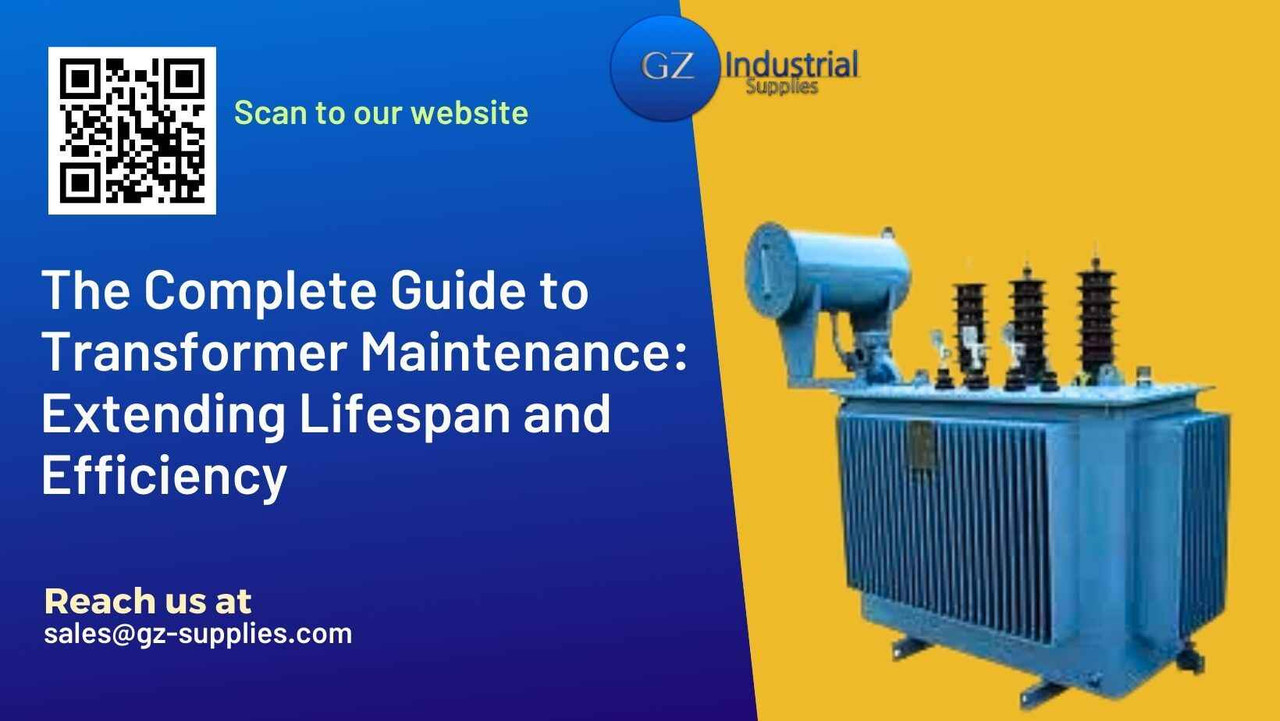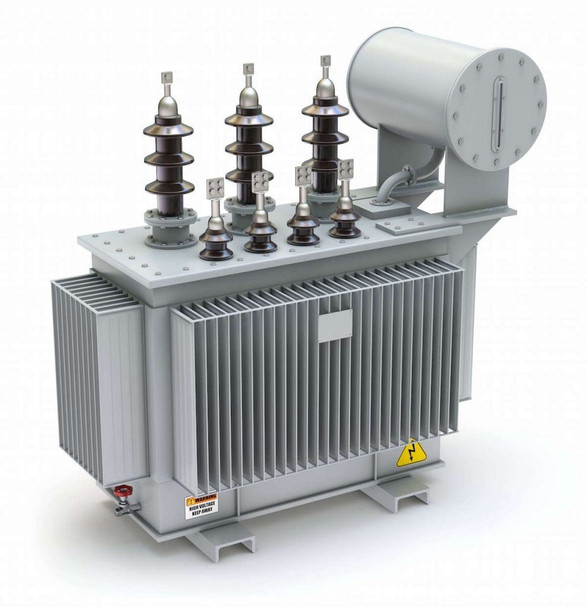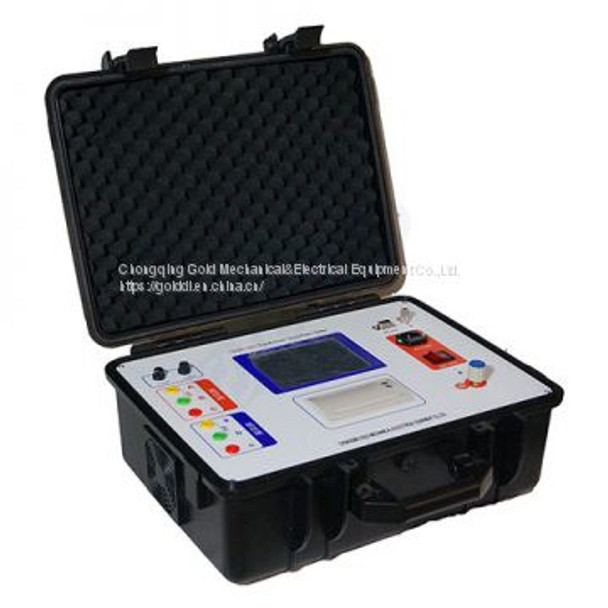The Complete Guide to Transformer Maintenance: Extending Lifespan and Efficiency
Key Takeaways
Introduction
Transformers are critical components in electrical systems, responsible for transferring electrical energy between circuits and ensuring the smooth operation of power networks. However, like all machinery, transformers are subject to wear and tear over time. Regular maintenance is essential to extend their lifespan, enhance efficiency, and prevent unexpected failures that could lead to costly downtime or safety hazards.
Transformers like the Astor Power Transformer, MEKSAN Power Transformer, and ABB Transformer are vital in ensuring consistent electricity distribution across various sectors. However, without proper maintenance, these transformers can suffer from wear and tear, leading to inefficiencies, costly repairs, or even failures.
The Complete Guide to Transformer Maintenance: Extending Lifespan and Efficiency provides an in-depth look at the essential practices for maintaining these critical components. By implementing regular inspections, utilizing advanced diagnostics, and adopting modern technologies, businesses can significantly extend the lifespan of their transformers. This guide also highlights the importance of selecting high-quality transformers and accessories, ensuring they meet operational demands while minimizing downtime and maximizing performance.
Epochem premium Transformer Oil 20L
Understanding Transformer Components and Their Functions
To effectively maintain transformers, it’s crucial to understand the key components and their functions:
Core and Windings:
The core and windings are the heart of a transformer, responsible for transferring energy between circuits. The core, usually made of iron, focuses the magnetic field, while the windings (copper or aluminum) conduct electricity. Over time, these components can suffer from overheating and insulation degradation, which can lead to inefficiencies or even failure. Regular inspections and thermal monitoring are essential to prevent these issues.
Insulation System:
Insulation is critical for preventing electrical faults and ensuring safe operation. Transformers use various insulation materials, such as oil, paper, and synthetic materials, to protect the windings from short circuits. Regular oil sampling and insulation resistance testing are key to maintaining the integrity of the insulation system, as any breakdown can result in severe operational issues.
Cooling Systems:
Cooling systems, whether oil-cooled, air-cooled, or water-cooled, play a vital role in managing the temperature within a transformer. Overheating is a major cause of transformer failure, making it essential to regularly check and maintain the cooling systems. This includes ensuring that cooling fins are clean and that oil levels and quality are within acceptable limits.
Bushings and Tap Changers:
Bushings allow high-voltage conductors to pass through the transformer casing, while tap changers adjust the voltage ratio to meet varying load requirements. Both components are susceptible to wear and can be points of failure if not properly maintained. Regular inspections and testing of bushings and tap changers are necessary to avoid disruptions in service.
Protective Relays and Monitoring Equipment:
Modern transformers are equipped with protective relays and monitoring equipment that provide real-time data on operational conditions. These systems monitor parameters such as temperature, load, and moisture levels, helping operators detect issues before they become critical. Ensuring that these monitoring systems are functioning correctly is crucial for effective preventive maintenance.
MEKSAN Power Transformer 500KVA 11.0/400KV
Routine Maintenance Procedures
Routine maintenance is the backbone of transformer care, involving several essential procedures:
1. Visual Inspections:
Regular visual inspections help identify external signs of wear, leaks, corrosion, or other issues. These inspections should be conducted frequently, and a checklist can be used to ensure all components are thoroughly examined. Identifying problems early through visual inspections can prevent minor issues from escalating into major failures.
2. Oil Sampling and Analysis:
Oil plays a dual role in cooling and insulating transformers. Regular oil sampling and analysis are critical for detecting contamination, moisture, and degradation. Key indicators such as dielectric strength, moisture content, and dissolved gasses provide insights into the transformer’s health. Anomalies in these indicators can signal the need for further investigation or immediate maintenance action.
3. Electrical Testing:
Electrical tests are performed to assess the integrity of the transformer’s insulation and overall performance. These include insulation resistance testing, power factor testing, and Sweep Frequency Response Analysis (SFRA). These tests help detect issues such as winding deformation, insulation breakdown, and other electrical faults.
4. Thermal Imaging:
Infrared thermography is a powerful tool for identifying hotspots and abnormal heating within a transformer. By detecting temperature anomalies, thermal imaging can reveal potential problems such as overloaded windings, poor connections, or cooling system failures. This non-invasive technique is an essential part of routine maintenance.
5. Vibration Analysis:
Transformers, like all machinery, emit vibrations during operation. Analyzing these vibrations can provide valuable insights into mechanical conditions such as misalignments, loose components, or bearing issues. Vibration analysis is an effective method for detecting mechanical problems before they lead to more significant failures.
Advanced Diagnostic Techniques
For more in-depth analysis and early fault detection, advanced diagnostic techniques are employed:
1. Dissolved Gas Analysis (DGA):
DGA is one of the most critical tests for transformers, allowing for the detection of internal faults before they manifest as visible issues. By analyzing the gasses dissolved in transformer oil, DGA can identify problems such as arcing, corona discharge, or overheating. Each type of gas corresponds to specific fault types, making DGA an invaluable tool for predictive maintenance.
2. Frequency Response Analysis (FRA):
FRA is used to detect winding deformations, core issues, and other internal mechanical problems. By measuring the transformer’s response to different frequencies, this technique can pinpoint deviations from the norm that indicate potential failures. Regular FRA testing helps ensure the mechanical integrity of the transformer.
3. Partial Discharge Testing:
Partial discharge (PD) occurs when insulation begins to break down, leading to small electrical discharges within the transformer. PD testing can detect these discharges early, allowing for intervention before a complete insulation failure occurs. This testing is especially important for maintaining the longevity of the insulation system.
4. Bushing Monitoring and Testing:
Bushings are vital for ensuring safe electrical connections, and their failure can lead to severe transformer damage. Bushing monitoring involves tracking capacitance and power factor changes over time. Any significant deviation may indicate aging or degradation, necessitating prompt action. Testing these components regularly helps in identifying early signs of bushing failure, ensuring operational continuity.
5. On-Line Monitoring Systems:
On-line monitoring systems are increasingly becoming a standard in transformer maintenance. These systems provide real-time data on various transformer parameters, including temperature, gas levels, and electrical performance. They are particularly useful for detecting gradual changes that could indicate impending failure. Integrating on-line monitoring systems with predictive maintenance strategies can significantly reduce downtime and extend the life of transformers.
GDBC-901 Transformer Ratio Meter
Preventive vs. Predictive Maintenance
In transformer maintenance, it's crucial to differentiate between preventive and predictive maintenance approaches.
Preventive Maintenance:
Preventive maintenance involves scheduled activities aimed at preventing equipment failure. Common preventive tasks include regular oil changes, inspections, and cleaning. The goal is to address potential issues before they lead to significant problems. This traditional approach helps in maintaining the transformer’s operational efficiency and avoiding unexpected breakdowns.
Predictive Maintenance:
Predictive maintenance, on the other hand, relies on data-driven insights to predict when a component might fail. Using advanced diagnostics like Dissolved Gas Analysis (DGA) and Frequency Response Analysis (FRA), predictive maintenance allows for more targeted interventions, addressing issues before they cause a failure. This approach is more efficient and cost-effective in the long run, as it minimizes unnecessary maintenance activities while ensuring high reliability.
Integrating IoT and Smart Technologies:
The integration of IoT and smart technologies into transformer maintenance is revolutionizing the industry. Smart sensors and IoT devices continuously monitor transformer conditions, providing real-time data that can be analyzed to predict potential issues. This data-driven approach enhances the effectiveness of predictive maintenance, allowing for quick responses to emerging problems and reducing the likelihood of catastrophic failures.
Common Transformer Failures and How to Prevent Them
Despite regular maintenance, transformers can still experience failures. Understanding common failures and their prevention is key to long-term transformer reliability.
1. Overheating and Cooling System Failures:
Overheating is one of the most common causes of transformer failure. It can occur due to inadequate cooling, excessive load, or poor ventilation. Regular maintenance of the cooling system, including cleaning cooling fins and checking oil levels, is essential to prevent overheating. Installing temperature sensors and using thermal imaging can help detect hotspots early.
2. Insulation Failures:
Insulation breakdown is another frequent issue, often caused by aging, moisture ingress, or excessive electrical stress. Regular insulation resistance testing and oil analysis can detect early signs of insulation degradation. Keeping the transformer environment dry and well-maintained also helps in prolonging insulation life.
3. Short Circuits and Electrical Faults:
Short circuits and other electrical faults can cause significant damage to transformers, often leading to complete failure. These issues are typically the result of insulation failure, winding deformation, or external faults. Regular electrical testing, such as power factor testing and Sweep Frequency Response Analysis (SFRA), helps in identifying potential electrical issues before they result in short circuits.
4. Mechanical Failures:
Mechanical failures in transformers can occur due to vibrations, poor installation, or degradation of internal components. Vibration analysis is a valuable tool for detecting mechanical issues early. Ensuring that transformers are installed correctly and that all components are secure can prevent many mechanical failures.
MEKSAN Power Transformer 1.5MVA 11.0/400KV
Best Practices for Extending Transformer Lifespan
To ensure the longevity and optimal performance of transformers, it’s essential to follow these best practices:
1. Regular Maintenance Scheduling:
Establishing a consistent maintenance schedule is crucial for preventing unexpected failures. This schedule should include routine inspections, oil analysis, electrical testing, and any other necessary procedures. Utilizing maintenance management software can help keep track of these tasks and ensure they are performed on time, thereby extending the life of the transformer.
2. Staff Training and Safety Procedures:
Proper training is vital for personnel responsible for transformer maintenance. This includes understanding the components, maintenance procedures, and safety protocols. Regular training sessions help keep staff updated on the latest technologies and best practices, reducing the risk of accidents and ensuring effective maintenance.
3. Documentation and Record Keeping:
Keeping detailed records of all maintenance activities, including inspections, tests, and repairs, is essential for tracking the condition of transformers over time. These records can be invaluable for diagnosing issues, planning future maintenance, and ensuring compliance with regulatory requirements.
4. Emergency Preparedness:
Having an emergency response plan in place for transformer failures is critical. This plan should include procedures for quickly isolating the transformer, assessing the situation, and restoring power. Regularly reviewing and updating this plan helps ensure readiness in the event of an unexpected failure.
Cost-Benefit Analysis of Regular Maintenance
Investing in regular transformer maintenance offers numerous benefits that far outweigh the costs:
1. Long-Term Cost Savings:
While regular maintenance requires an initial investment, it can significantly reduce the likelihood of costly repairs or replacements. Preventive and predictive maintenance strategies help avoid major failures, saving money in the long run.
2. Impact on Operational Efficiency:
Well-maintained transformers operate more efficiently, reducing energy losses and minimizing downtime. This efficiency translates to lower operating costs and a more reliable power supply.
3. Environmental and Regulatory Compliance:
Regular maintenance helps ensure that transformers operate within environmental and safety regulations, reducing the risk of fines and penalties. Properly maintained transformers are less likely to leak or fail, which can have severe environmental consequences.
Case Studies and Real-World Examples
1. Extending Transformer Lifespan through Predictive Maintenance:
In a large industrial facility, predictive maintenance using Dissolved Gas Analysis (DGA) and Frequency Response Analysis (FRA) helped identify and address potential faults early, extending the lifespan of critical transformers by several years. The facility saw a significant reduction in downtime and maintenance costs.
2. Avoiding Catastrophic Failures with Regular Inspections:
A utility company implemented a strict schedule of visual inspections and oil analysis for its aging transformers. This proactive approach allowed them to detect and repair minor issues before they led to catastrophic failures, avoiding costly outages and repairs.
3. Implementing IoT in Transformer Maintenance:
A power distribution company integrated IoT devices into its transformer fleet, enabling real-time monitoring and predictive maintenance. This technology allowed for immediate detection of anomalies, reducing the risk of failure and improving overall network reliability.
Frequently Asked Questions
1. Why is oil sampling and analysis so important for transformers?
Oil sampling and analysis help detect contaminants, moisture, and other factors that could compromise the transformer’s insulation and cooling properties. Regular analysis ensures that any issues are identified early, preventing potential failures.
2. What is the difference between preventive and predictive maintenance?
Preventive maintenance involves scheduled activities to prevent faults, while predictive maintenance uses data and diagnostics to predict and address issues before they cause failures. Predictive maintenance is more targeted and can reduce unnecessary maintenance activities.
3. How often should transformers undergo electrical testing?
The frequency of electrical testing depends on the transformer’s age, operating conditions, and criticality. Typically, it’s recommended to perform electrical testing annually, but more frequent testing may be necessary for older or heavily loaded transformers.
4. Can modern technology really extend the life of a transformer?
Yes, modern technologies like IoT, smart sensors, and advanced diagnostics can significantly extend the life of transformers by enabling real-time monitoring, early fault detection, and more efficient maintenance practices.
5. What are the signs that a transformer might be failing?
Common signs of potential transformer failure include unusual noises, overheating, oil leaks, changes in oil color or smell, and abnormal readings from monitoring equipment. Addressing these signs promptly can prevent a complete failure.
Related Articles
Why Transformer oils are needed in Transformer Maintenance
The Best Transformer prices in Nigeria
10 Benefits of using a Transformer
How to service a power transformer
Conclusion
Transformer maintenance is not just about preventing failures; it’s about ensuring the long-term reliability and efficiency of the entire power system. By adopting a comprehensive maintenance plan that includes routine inspections, advanced diagnostics, and predictive strategies, businesses can significantly extend the lifespan of their transformers, reduce costs, and maintain operational efficiency. Investing in regular maintenance is a small price to pay compared to the potential costs of unplanned downtime or catastrophic failures.
Ensure the longevity and efficiency of your transformers by investing in top-quality maintenance tools and supplies. Visit GZ Industrial Supplies today to explore a wide range of products designed to keep your transformers in peak condition. From advanced diagnostic equipment to essential maintenance supplies, GZ Industrial Supplies has everything you need to maintain your power systems with confidence.











